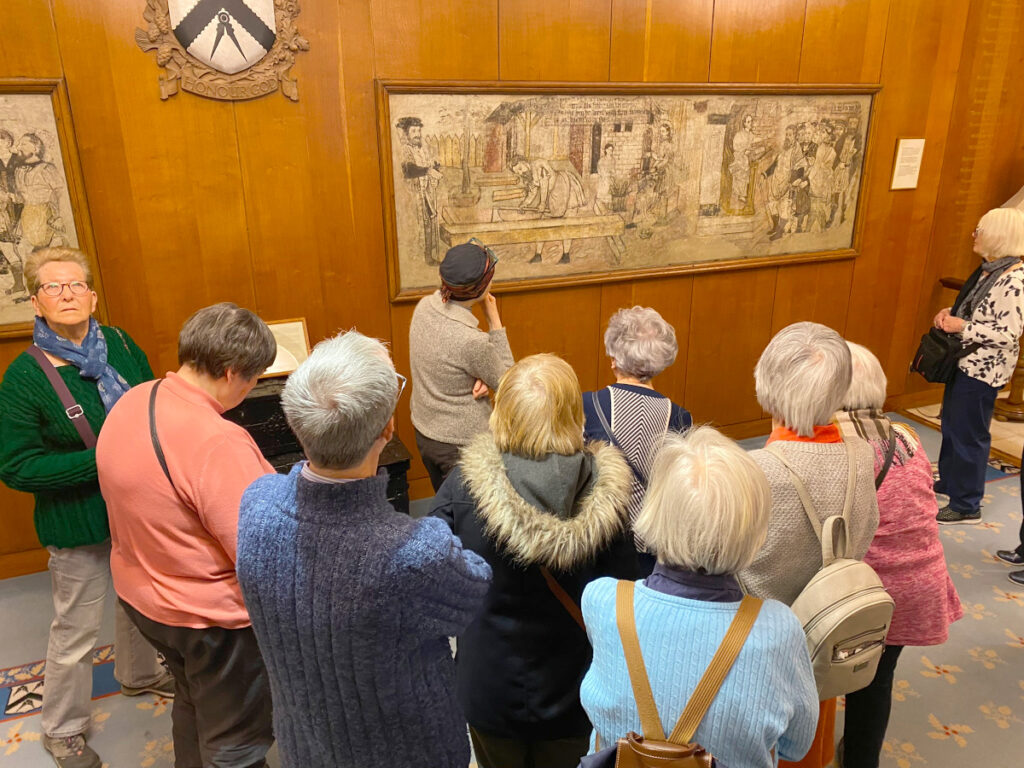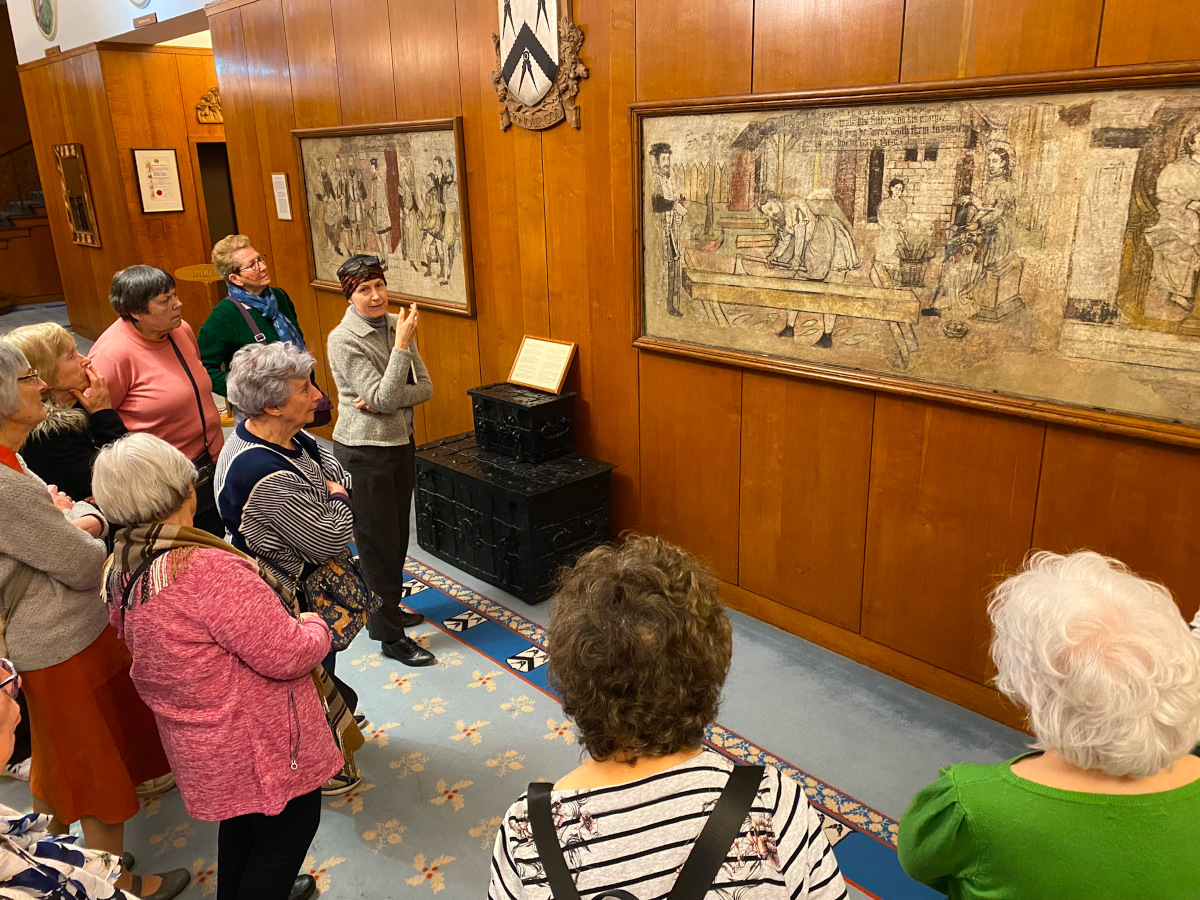The members of the Kenton and District u3a visited the Carpenters’ Hall in the City of London on 18 April 2023. The Carpenters’ Company has been based on London Wall since its first Hall was built there in 1429. Since that time, there have been three Halls. The current Hall was opened in 1960. Pictured are members of the Kenton & District u3a, listening carefully to the Hall Archivist explaining the details of the Tudor period wall painting depicting Christ working in his father’s carpentry workshop.
From medieval times Carpenters’ Hall has been used by groups and organisations to meet and entertain, including other guilds. The site was originally part of the estate of the Hospital of St Mary without Bishopsgate, also known as St Mary Spital.
In January 1519/20 the land was acquired by Thomas Smart, Master of the Company, and he left it to the Company in his will dated 12 March of the same year.
A fire in the mid-nineteenth century severely weakened the building and a second Hall was built during the 1870s, opening in 1880.
The third Hall, which still stands today, was built following an air raid in 1941 when the second Hall was completely burnt out.
Membership of the Company, as with most livery companies, is made up of Freemen and Liverymen. Members join the Company as Freemen by servitude (apprenticeship to a craft member of the Company) or, more usually, by redemption (admission after payment of a fee). After application to the Court Freemen may be selected to join the Livery, which is limited to 150 members.
About 40 per cent of the Livery work in construction-related professions or activities, and occasionally men and women distinguished in public life have been admitted. The former Prince of Wales was made an Honorary Liveryman in 1995, in recognition of his interest in London’s architecture.

The Carpenters’ Company received its first Royal Charter in 1477, and in 1515 was ranked 26 in order of precedence out of the 48 City Livery Companies then existing. The Company’s considerable influence over the building trade reduced after the Great Fire of 1666, when many timber buildings were rebuilt in brick and stone. As a result, during the eighteenth and early nineteenth centuries the Company’s links with its craft weakened and the number of members directly related to carpentry declined. However the Company continued its ceremonial and business functions, selling and purchasing land and maintaining its charitable activities.
The late nineteenth and twentieth centuries saw the Company actively renew and foster its support for the craft of carpentry. Integral to this goal, the Company founding its own training college, established links within the building trade and increased the numbers of members linked to the craft. The Carpenters’ Company today remains true to the spirit of its founders. It continues to support a broad range of charitable and educational activities, and to encourage and promote the highest standards of woodworking craftsmanship.

